Abstract
This study describes the effect of mild head injury in preschool children on aspects of their cognitive performance in the year after injury and at the age of 6.5 years, with particular reference to the development of reading skills. Mild head injury was defined by diagnosis at a hospital emergency department of a head injury which was not severe enough to need admission for observation. Seventy eight such children were compared with a group of 86 with a minor injury elsewhere. The groups had similar developmental, family, and socioeconomic status. There were no differences in cognitive tests soon after the injury, but at six months and one year children with mild head injury scored less than controls on one test, solving a visual puzzle (visual closure); they were also more likely to have had another mild head injury. At 6.5 years of age they still scored less than controls, reading ability was related to their visual closure score at one year, and they were more likely to have needed help with reading. Mild head injury seems to be able to produce subtle but significant changes which can affect school performance.
Full text
PDF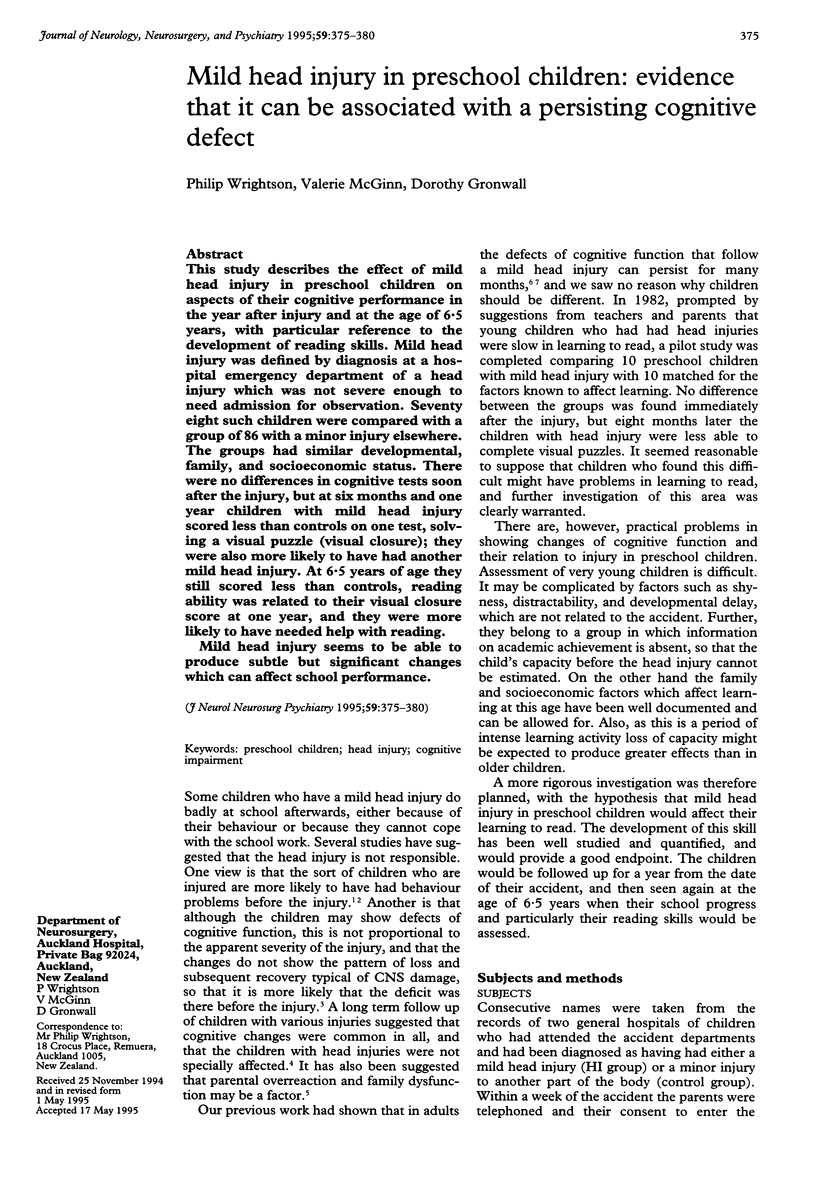
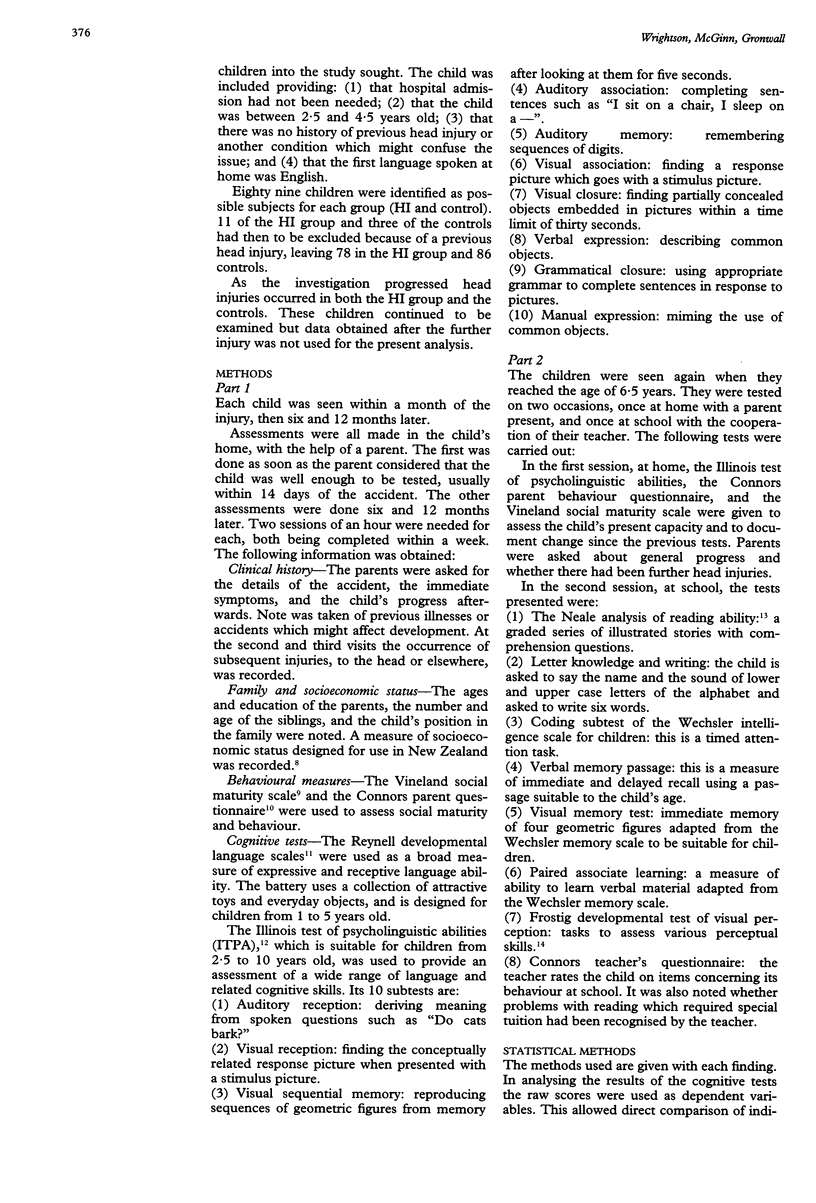
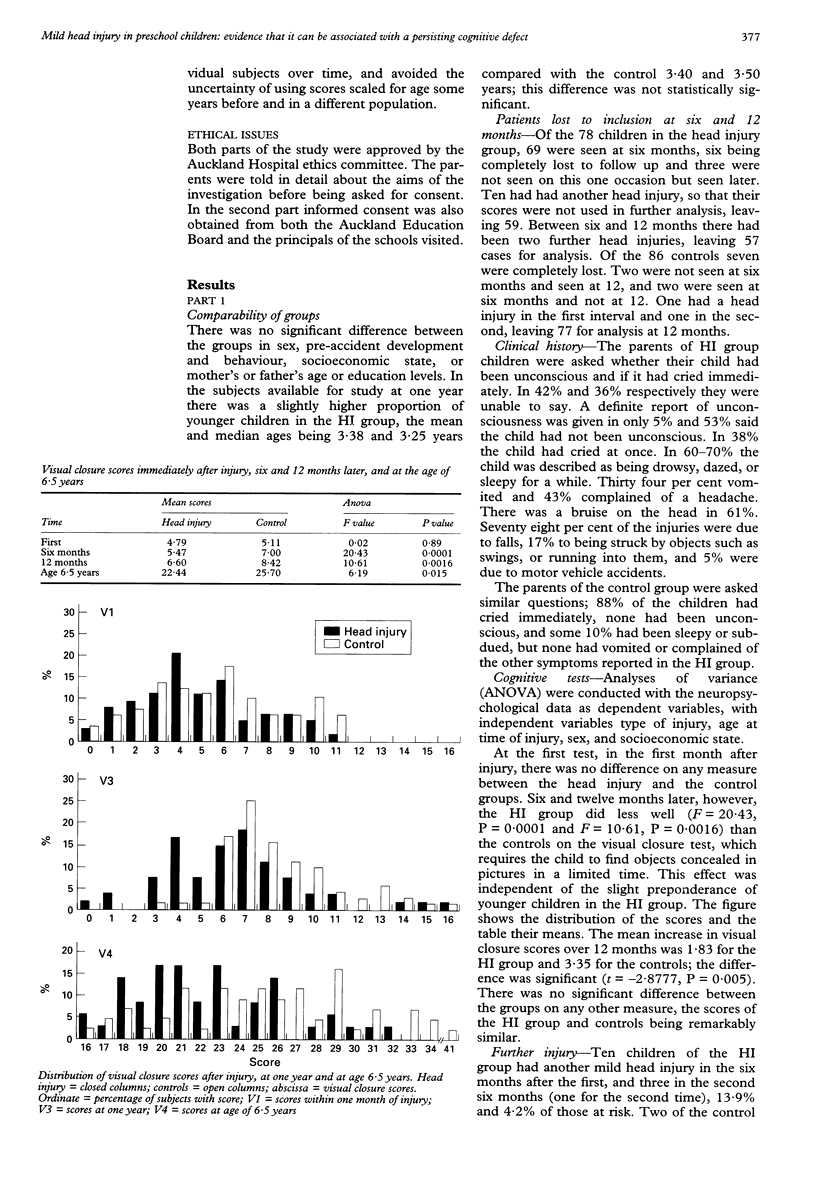
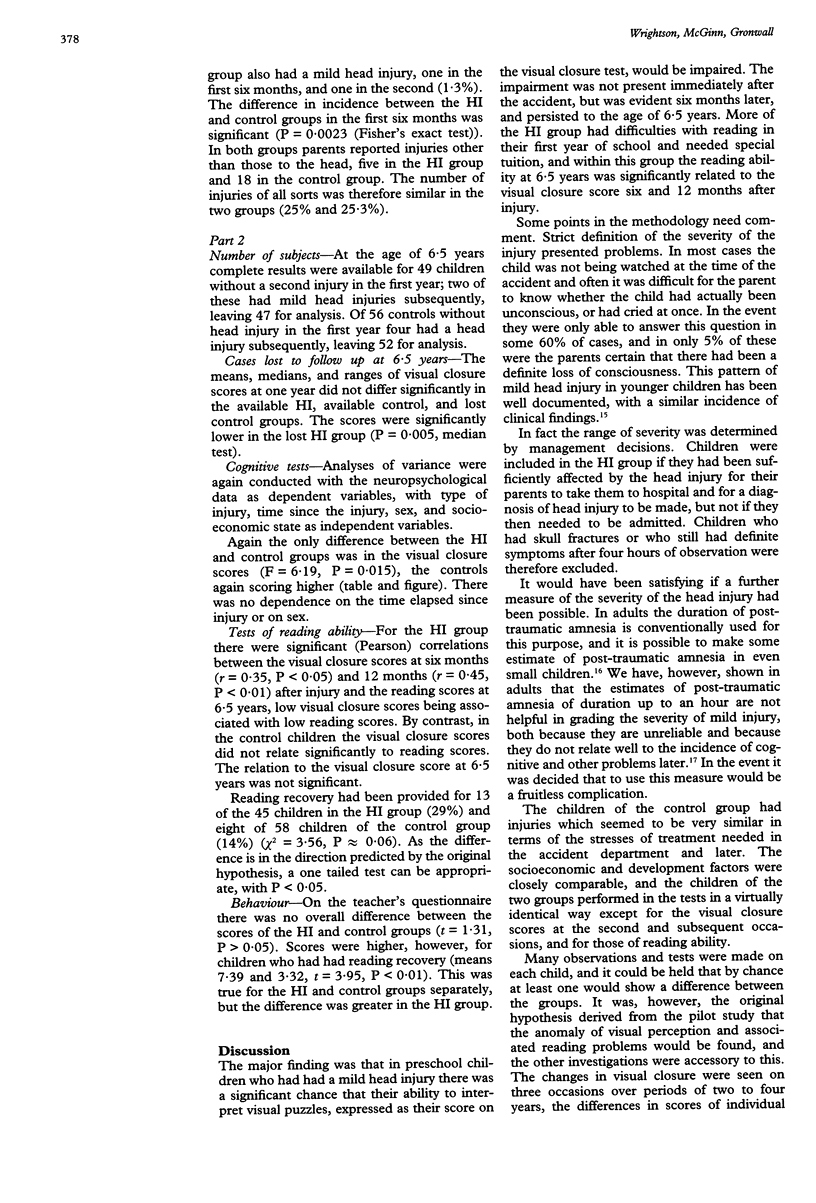
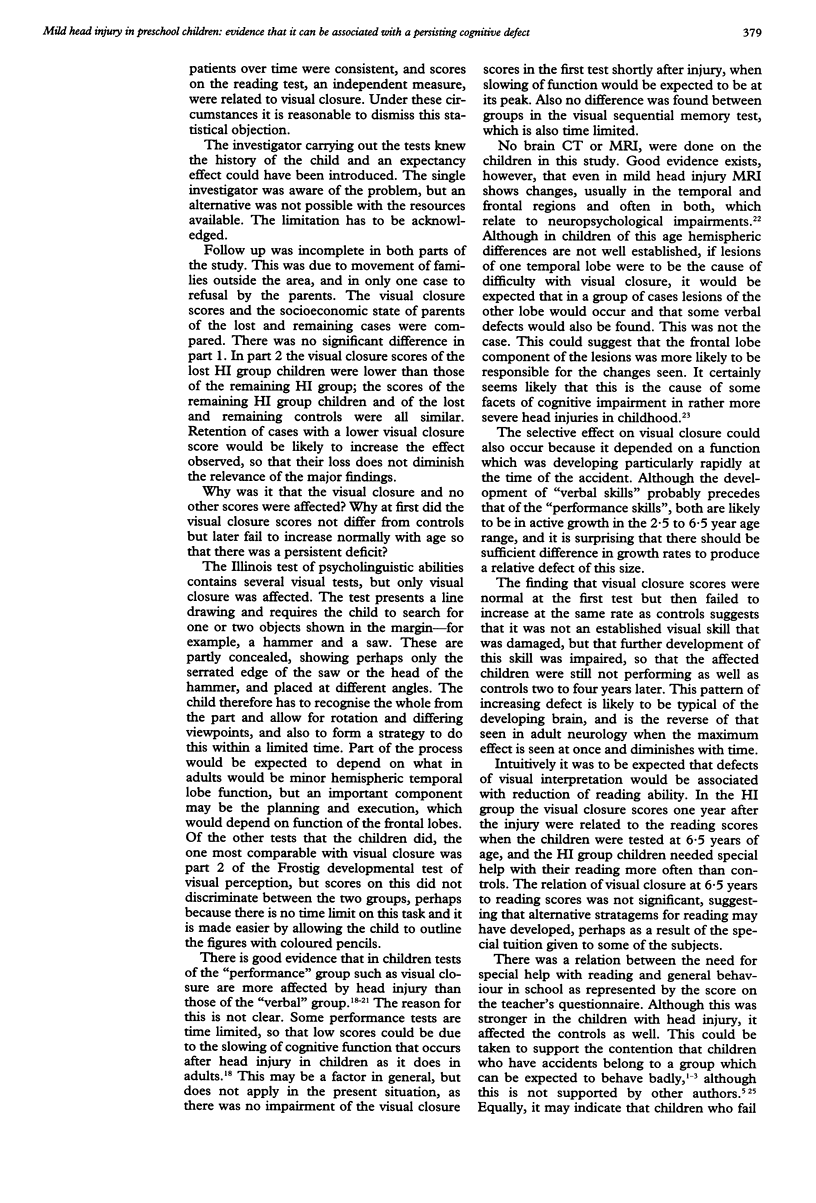
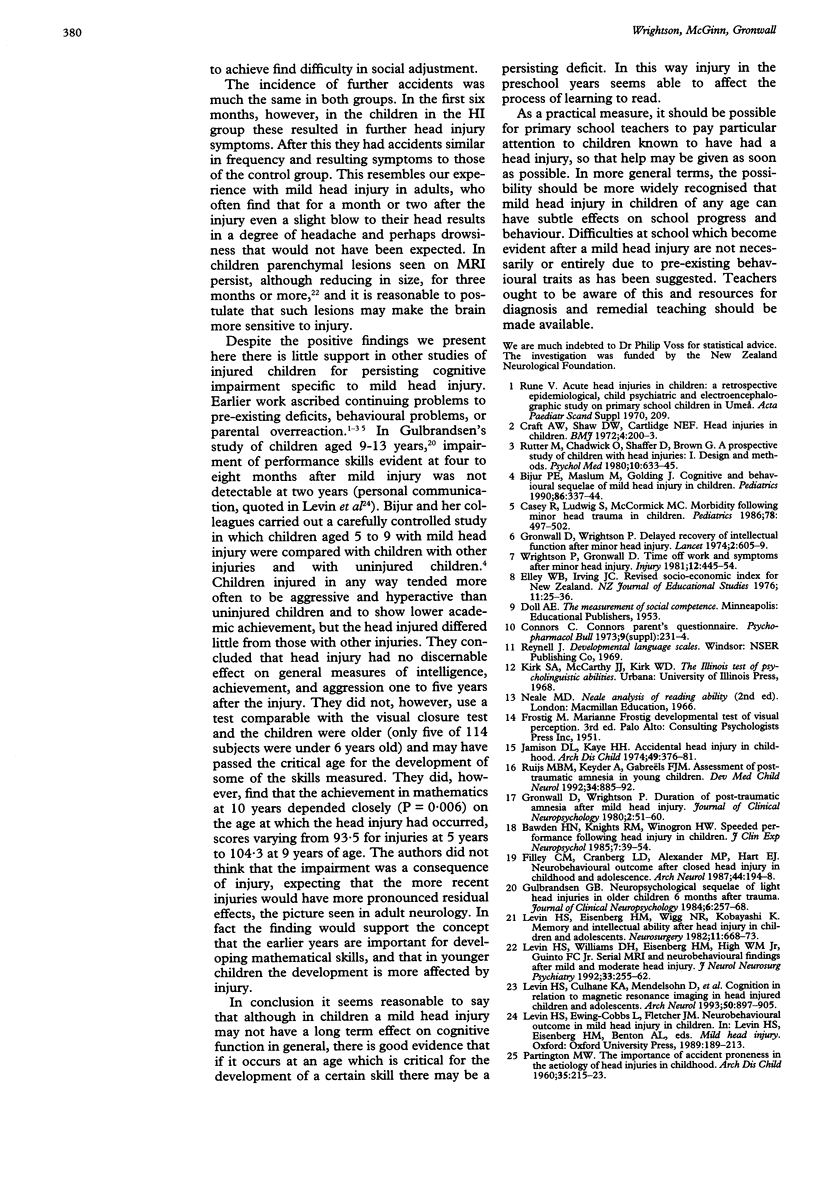
Selected References
These references are in PubMed. This may not be the complete list of references from this article.
- Bawden H. N., Knights R. M., Winogron H. W. Speeded performance following head injury in children. J Clin Exp Neuropsychol. 1985 Feb;7(1):39–54. doi: 10.1080/01688638508401241. [DOI] [PubMed] [Google Scholar]
- Bijur P. E., Haslum M., Golding J. Cognitive and behavioral sequelae of mild head injury in children. Pediatrics. 1990 Sep;86(3):337–344. [PubMed] [Google Scholar]
- Casey R., Ludwig S., McCormick M. C. Morbidity following minor head trauma in children. Pediatrics. 1986 Sep;78(3):497–502. [PubMed] [Google Scholar]
- Craft A. W., Shaw D. A., Cartlidge N. E. Head injuries in children. Br Med J. 1972 Oct 28;4(5834):200–203. doi: 10.1136/bmj.4.5834.200. [DOI] [PMC free article] [PubMed] [Google Scholar]
- Filley C. M., Cranberg L. D., Alexander M. P., Hart E. J. Neurobehavioral outcome after closed head injury in childhood and adolescence. Arch Neurol. 1987 Feb;44(2):194–198. doi: 10.1001/archneur.1987.00520140058018. [DOI] [PubMed] [Google Scholar]
- Gronwall D., Wrightson P. Delayed recovery of intellectual function after minor head injury. Lancet. 1974 Sep 14;2(7881):605–609. doi: 10.1016/s0140-6736(74)91939-4. [DOI] [PubMed] [Google Scholar]
- Gulbrandsen G. B. Neuropsychological sequelae of light head injuries in older children 6 months after trauma. J Clin Neuropsychol. 1984 Aug;6(3):257–268. doi: 10.1080/01688638408401217. [DOI] [PubMed] [Google Scholar]
- Jamison D. L., Kaye H. H. Accidental head injury in childhood. Arch Dis Child. 1974 May;49(5):376–381. doi: 10.1136/adc.49.5.376. [DOI] [PMC free article] [PubMed] [Google Scholar]
- Levin H. S., Eisenberg H. M., Wigg N. R., Kobayashi K. Memory and intellectual ability after head injury in children and adolescents. Neurosurgery. 1982 Nov;11(5):668–673. doi: 10.1227/00006123-198211000-00009. [DOI] [PubMed] [Google Scholar]
- Levin H. S., Williams D. H., Eisenberg H. M., High W. M., Jr, Guinto F. C., Jr Serial MRI and neurobehavioural findings after mild to moderate closed head injury. J Neurol Neurosurg Psychiatry. 1992 Apr;55(4):255–262. doi: 10.1136/jnnp.55.4.255. [DOI] [PMC free article] [PubMed] [Google Scholar]
- PARTINGTON M. W. The importance of accident-proneness in the aetiology of head injuries in childhood. Arch Dis Child. 1960 Jun;35:215–223. doi: 10.1136/adc.35.181.215. [DOI] [PMC free article] [PubMed] [Google Scholar]
- Ruijs M. B., Keyser A., Gabreëls F. J. Assessment of post-traumatic amnesia in young children. Dev Med Child Neurol. 1992 Oct;34(10):885–892. doi: 10.1111/j.1469-8749.1992.tb11386.x. [DOI] [PubMed] [Google Scholar]
- Rutter M., Chadwick O., Shaffer D., Brown G. A prospective study of children with head injuries: I. Design and methods. Psychol Med. 1980 Nov;10(4):633–645. doi: 10.1017/s0033291700054933. [DOI] [PubMed] [Google Scholar]


